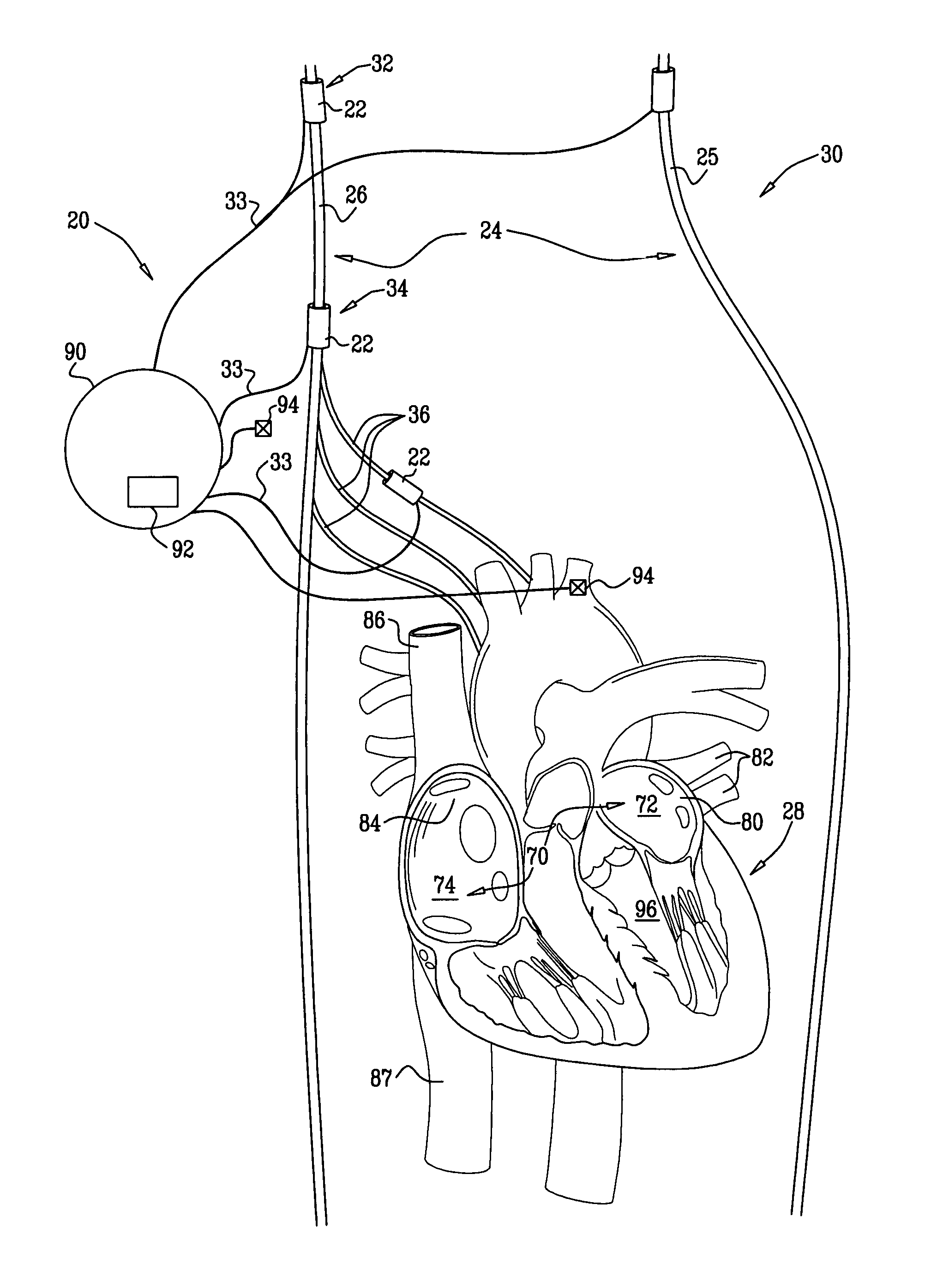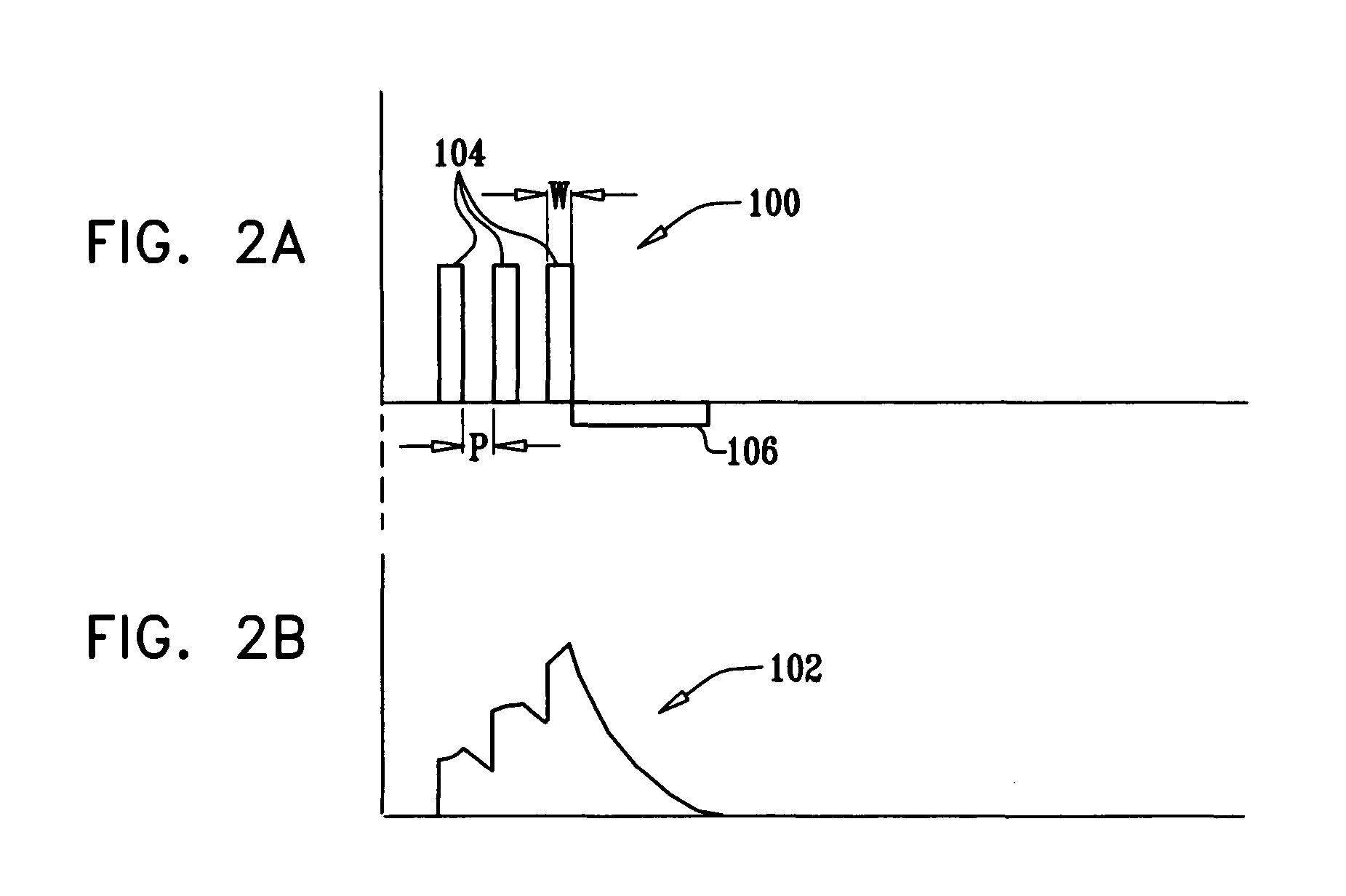Parasympathetic stimulation for termination of non-sinus atrial tachycardia
a non-sinus atrial tachycardia and parasympathetic stimulation technology, applied in the field of treating patients, can solve the problems of reduced cardiac output of patients, increased risk of thromboembolic events, etc., and achieves the effect of avoiding unnecessary stimulation and greater strength
- Summary
- Abstract
- Description
- Claims
- Application Information
AI Technical Summary
Benefits of technology
Problems solved by technology
Method used
Image
Examples
Embodiment Construction
[0260]FIG. 1 is a schematic illustration of a system 20 for treating a patient 30 suffering from non-sinus atrial tachycardia, in accordance with an embodiment of the present invention. Typically, the non-sinus atrial tachycardia includes atrial fibrillation (AF) or atrial flutter. System 20 comprises at least one electrode device 22, which is applied to a site of patient 30 containing parasympathetic nervous tissue.
[0261]In an embodiment of the present invention, electrode device 22 is applied to a vagus nerve 24 (either a left vagus nerve 25 or a right vagus nerve 26), which innervates a heart 28 of patient 30. For some applications, electrode device 22 is applied to: (a) a cervical site 32 of the vagus nerve; (b) a thoracic site 34 of the vagus nerve, above one or more of the junctions at which cardiac branches 36 of the vagus nerve branch off from the vagus nerve; or (c) a branch of the vagus nerve, such as one of the cardiac branches 36 (e.g., the superior cardiac nerve, the su...
PUM
 Login to View More
Login to View More Abstract
Description
Claims
Application Information
 Login to View More
Login to View More - R&D
- Intellectual Property
- Life Sciences
- Materials
- Tech Scout
- Unparalleled Data Quality
- Higher Quality Content
- 60% Fewer Hallucinations
Browse by: Latest US Patents, China's latest patents, Technical Efficacy Thesaurus, Application Domain, Technology Topic, Popular Technical Reports.
© 2025 PatSnap. All rights reserved.Legal|Privacy policy|Modern Slavery Act Transparency Statement|Sitemap|About US| Contact US: help@patsnap.com



